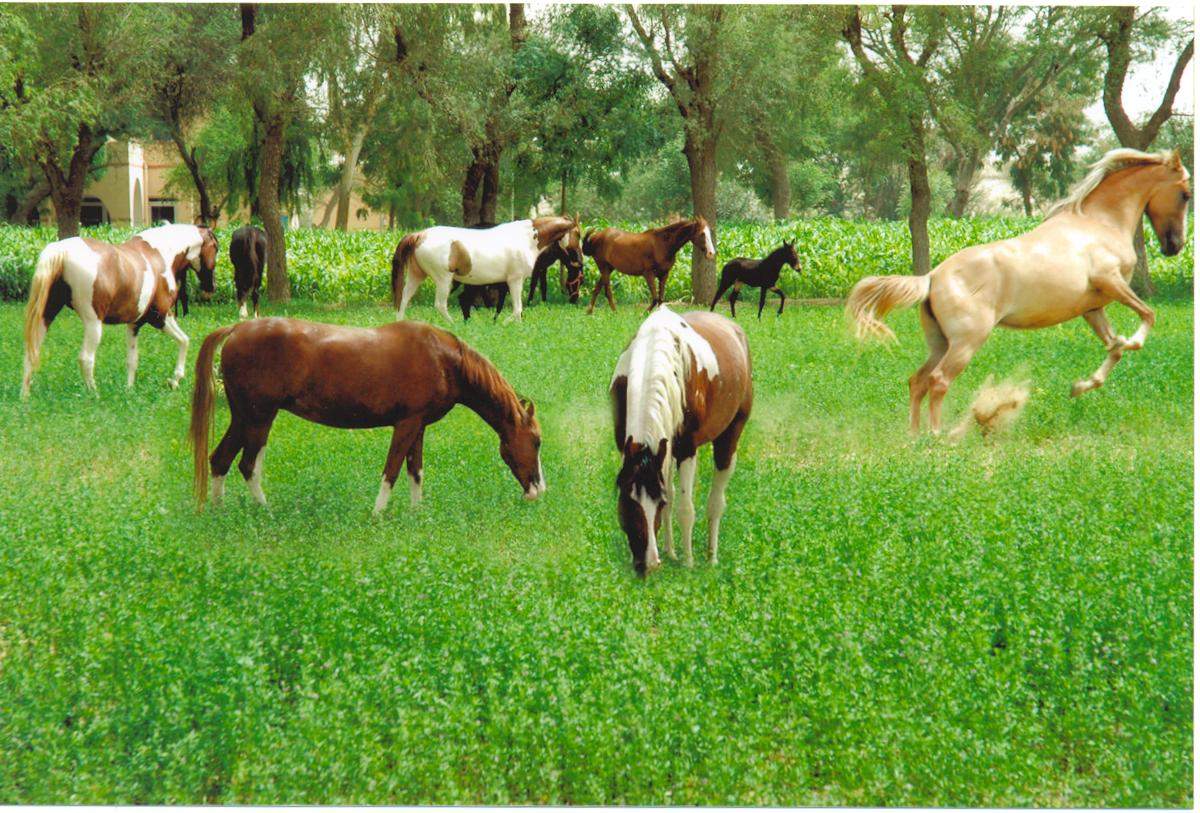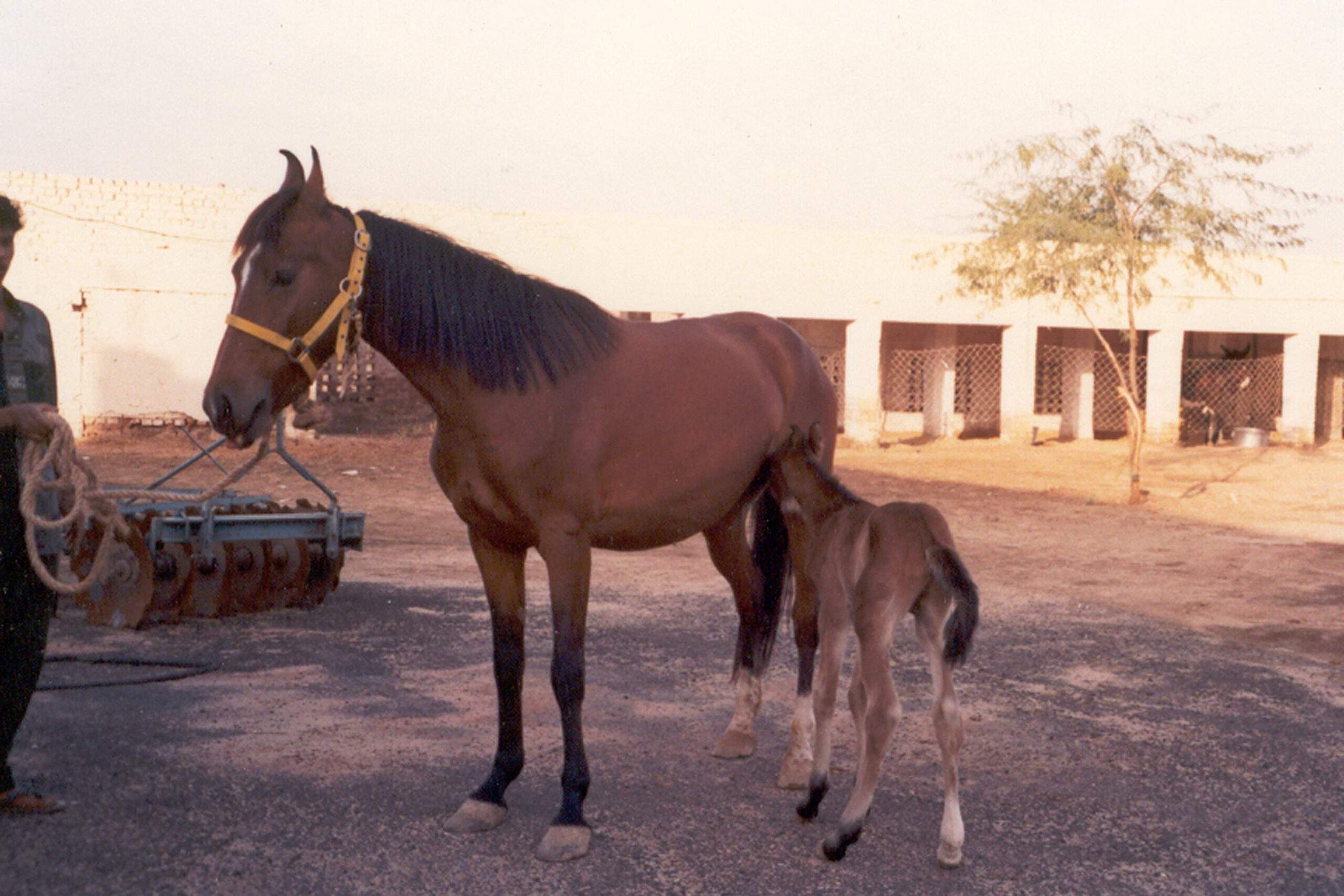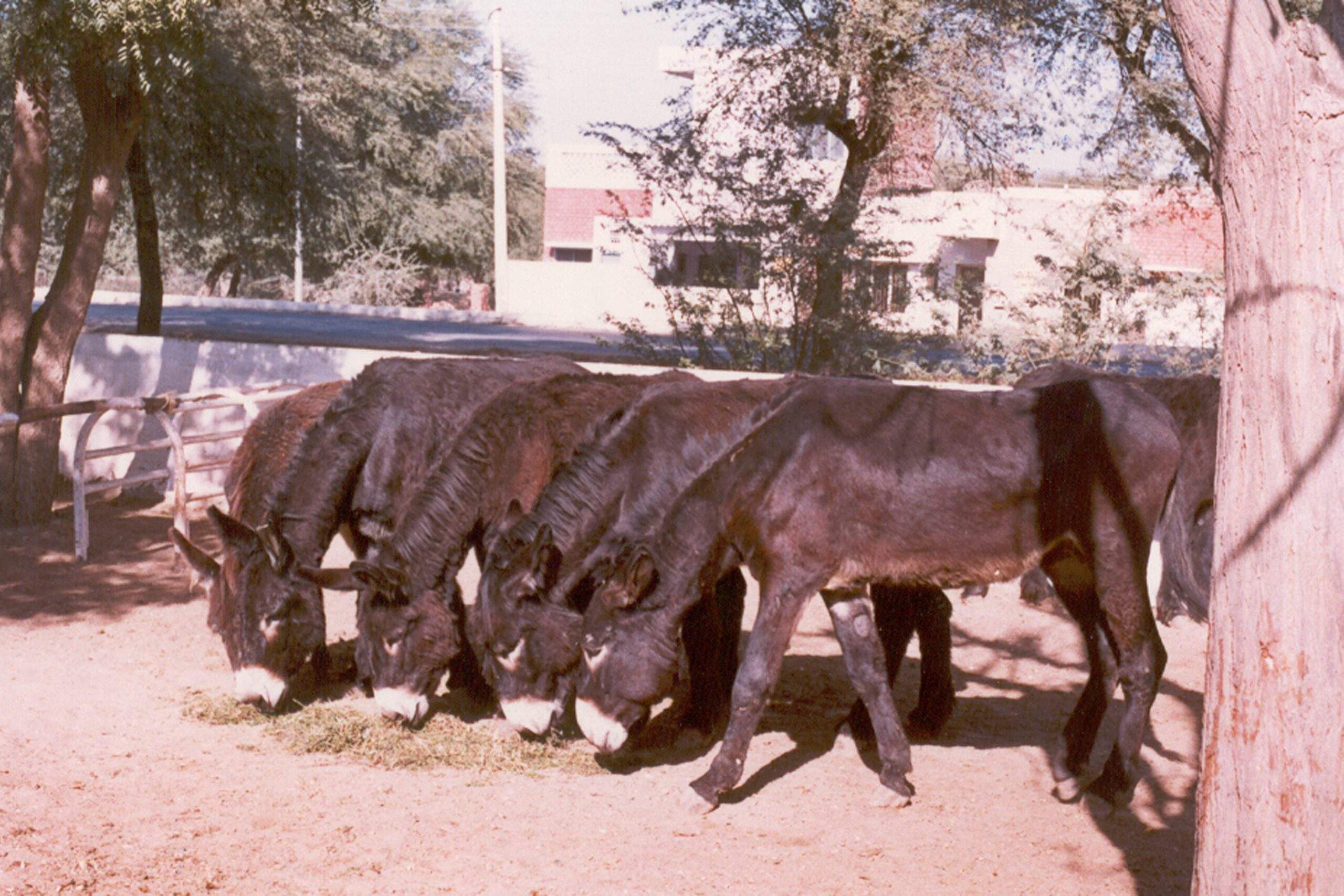| Feed Requirement of Foals (Per animal per day) | |||||
| Classification | Concentrates (Kg) | Dry fodder (Kg) | Green fodder (Kg) | Salt (g) | Mineral mixture(g) |
Nursing foals (4 months) | Increase 0.5 kg per month till weaning | No need | Mother’s share | Increase 15g per month till weaning | Increase 10g per month till weaning |
Weaning foal
| 2.5 | Manger should not be empty of dry roughage | 2 | 50 | 25 |
Yearling (12 Months)
| 2.8 | 5 | 60 | 30 | |
Long Yearling (18 months)
| 3.2 | 10 | 65 | 35 | |
Two year old (24 Months)
| 3.6 | 10 | 75 | 40 | |
| *Concentrate mixture should have 18% CP or above | |||||
Feed Requirement of Adult Horses (Per animal per day) | |||||
Classification | Concentrates (Kg) | Dry fodder (Kg) | Green fodder (Kg) | Salt (g) | Mineral mixture (g) |
Maintenance | 2 | Manger should not be empty of dry roughage | 5-10 | 40 | 20 |
Mares late gestation | 4 | 5-10 | 80 | 40 | |
Mares early lactation | 4 | 5-10 | 80-120 | 40-60 | |
Mares late lactation | 4 | 5 | 80 | 40 | |
*Concentrate mixture should have 16% CP | |||||
Feed Requirement of Working horses (Per animal per day) | |||||
Classification | Concentrates (Kg) | Dry fodder (Kg) | Green fodder (Kg) | Salt (g) | Mineral mixture(g) |
Light work
| 2 | Manger should not be empty of dry roughage | 5-10 | 40 | 20 |
Moderate work
| 4-6 | 5-10 | 80-120 | 40-60 | |
Heavy work | 4-6 | 5-10 | 80-120 | 40-60 | |
Intense work | 6-7 | 5-10 | 120-140 | 60-70 | |
*Concentrate mixture should have 16% CP | |||||
Feed Requirement of breeding and non breeding stallions (Per animal per day) | |||||
Classification | Concentrates (KG) | Dry fodder (KG) | Green fodder (Kg) | Salt (g) | Mineral mixture(g) |
Non breeding
| 2 | Manger should not be empty of dry roughage | 5-10 | 40 | 20 |
Breeding | 3-6 | 5-10 | 60-120 | 30-60 | |
*Concentrate mixture should have 16% CP | |||||
- Feed horse according to the class and requirement. Horses require different amounts of nutrients according to their lifestyle. The horse owner must be sure that each horse receives a total diet that meets the needs of the horse.
- The ration of a horse should be balanced and half of the ration should have good quality forage.
- Ration should be fed on the basis of weight rather not volume and adjusted according to growth, production and pregnancy of the animals.
- Abrupt change in ration may culminate to Colic. Changes in types of feed should be made gradually in 7 to 10 days for small changes and up to three weeks for radical changes.
- Include high quality forages and grain mixture to equine ration. Green fodder can cater the need of vitamins for the equines. Mules and donkeys seldom over-eat, but horses need restricted feeding to prevent colic, laminitis and equine metabolic syndrome.
- To prevent colic horse should get fibrous feed and less concentrate mixture. Moreover, high percentage of concentrate mixture in ration may cause laminitis. Total concentrate mixture should be fed in 2-3 divided feeds. Similarly, by feeding various types of grains as mixture, the nutrient deficiency in equines can be avoided.
- Never feed dirty, decayed, fungal and stale ration to horses to avoid risk of disease.
- If horses are fed in a group, use individual feeders spread far apart, put out extra feeders, and make provisions for timid horses (low in the pecking order) to ensure that they have the opportunity to eat adequately.
- Add legumes to the ration of young growing foals, pregnant mares and weak horses.
- Feed half the quantity of dry fodder during night time.
- Horse need routine dental care, Sharp teeth can cause problems with eating and also performance.
- Changes in consistency, color, odor or composition of feces may indicate a digestive disorder. Coprophagia may be an indication of vitamin or mineral deficiency, to supplement adequate quantify of vitamin and mineral in ration.


